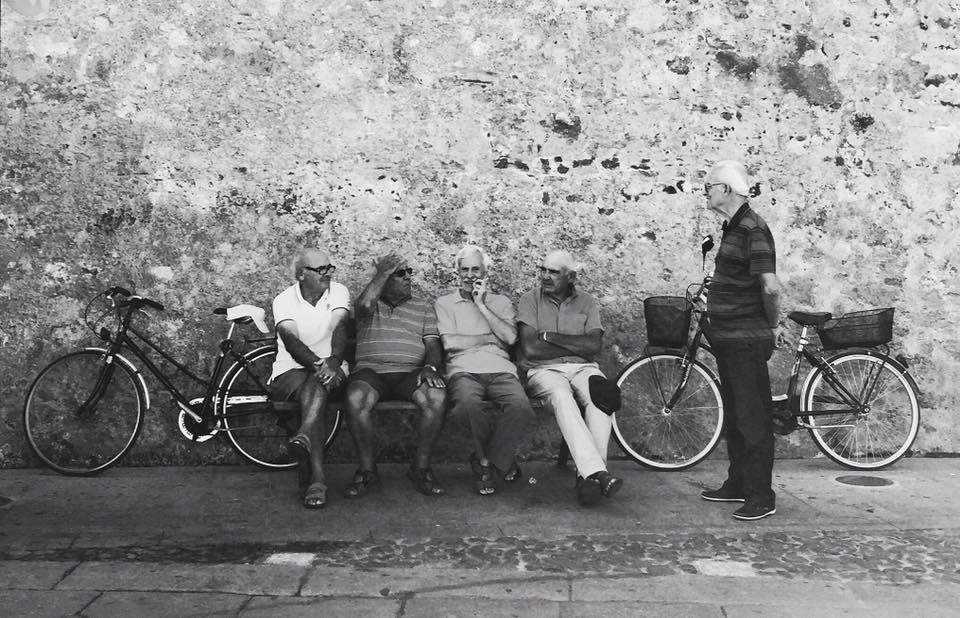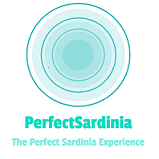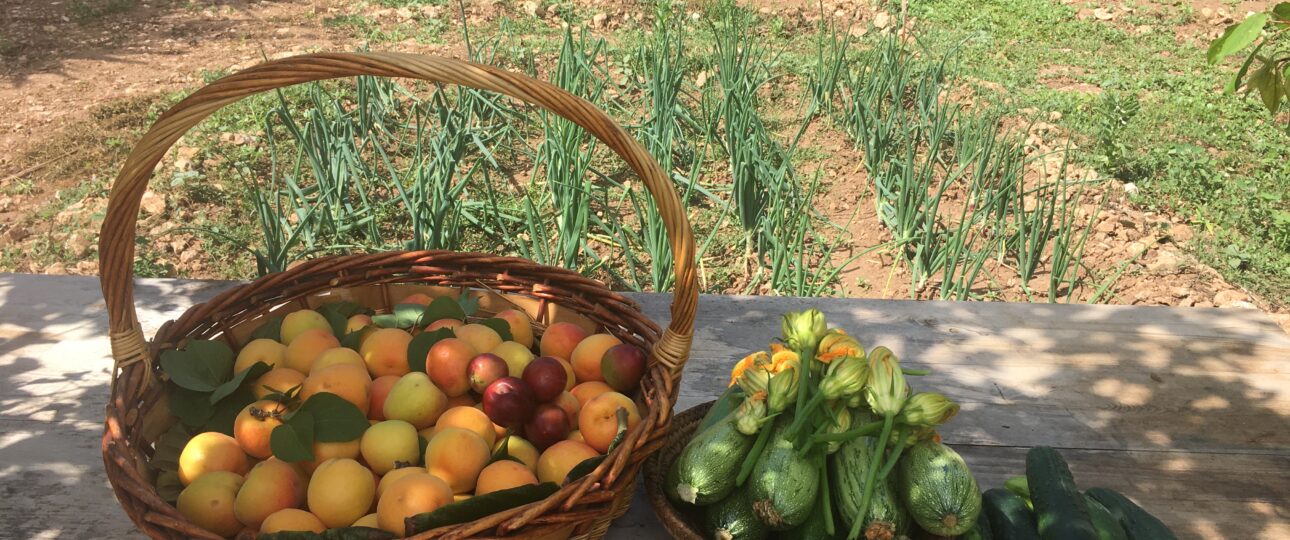Sardinia is one of the five areas in the world where the population is particularly long-lived and healthy. These blues zones are located in Ogliastra (Sardinia), Loma Linda (USA), Nicoya (Costa Rica), Ikaria (Greece) and Okinawa ( Japan).
This positive situation doen not only depends on the genetic heritage but also and above all on the lifestyle, obviously including nutrition.
A study has highlighted that one of the fundamental characteristics of Sardinian longevity is their diet.
What you eat is very important. How much you eat is even more important. Reducing the amount of calories especially in evening meals and the recommendation to stop eating when you are only 80% full.
In fact, a very important aspect of the Sardinian centenarians Diet is a restriction of the calories consumed between 1200 and 1500 per day.
These simple considerations are exactly at the basis of the diet of Sardinian centenarians.
Sardinian Centenarians Diet: what is it made of?

The diet of the centenarians of Sardinia is rich in proteins and fats. In particular, compared to the classic Mediterranean Diet it is lower in carbohydrates: only 40% instead of 60% of the Mediterranean.
What do Sardinian centenarians put on their plate?
Each of their meals is composed on average of 70% of vegetables (of which only 20% is fruit because it contains a lot of sugars) and 30% of lean proteins.
And as a snack? Dried fruit, olives and cheese. Prevailing is the use of extra-virgin olive oil generally home-produced.
So what is the secret of the diet of Sardinian centenarians?

Bread, pasta, meat when present – but sparingly – not much fish, lots of cheese. And most important: enjoying each bite calmly.
The pillars of the diet:
- Plenty of vegetables with each meal.
- Prefer vegetable fats such as olives, walnuts, almonds and nuts.
- Wholemeal bread and flour.
- Choose legumes, eggs, cheeses as sources of protein.
- Genuine non industrial or refined products.
GOAT MILK

Goat’s milk seems to be the key ingredient for such health and longevity. In fact, the centenarians, mainly shepherds or farmers, have mainly consumed this drink including derived cheeses. Goat’s milk has even appeared as a substitute for mother’s milk in certain situations of poverty.
MINETRONE OF LEGUMES AND VEGETABLES

Legume soups are considered to be the basis of Sardinian centenarians diet. Recently has become very famous the Melis family recipe, the longest-lived family in Sardinia.
The Melis family from Perdasdefogu, a village in the province of Nuoro in central Sardinia counted several centenarians in the family including the sisters: Consola 108 years, Claudia 103 years, Maria 100 years.
Thanks to an American journalist their recipe of minestrone became very popular. He presented the Melis Family Minestrone, as the secret recipe for a long and healthy life of one of the longest-lived family in the world.
The minestrone of the Melis family includes vegetables strictly from their own garden such as zucchini and potatoes as well as legumes such as beans, broad beans, chickpeas and fregola.
The Sardinian fregola is a kind pasta made of small little balls made from three simple ingredients: semolina, water and salt.
Read the recipe here: Sardinia Minestrone
The diet of the centenarians is also associated with a low consumption of fruit: especially pears and apples and many spontaneous herbs that grow on the spot.
Diet almost completely devoid of sweets, considered exceptions for holidays and therefore consumed only on certain days of the year.
OLIVE OIL

The extra-virgin olive oil has always been the basis of the Mediterranean diet and is also the basis of the Sardinian one. The peculiarity of Sardinian oil consumed by families is that of being an organic oil, handcrafted from cold-milled olive groves with zero processing. Rich in nutritional properties and low acidity, it is considered one of the best in Italy.
THE WINE

Wine represents the soul of the diet by Sardinian centenarians. The particular quality of the grapes – especially Cannonau, a native vine – is considered an elixir of long life. As several studies have shown, it contains an important amount of polyphenols and antioxidants useful for cells to stay healthy longer.
Where are The Blue Zones of Sardinia

In Sardinia there are 22 centenarians per hundred thousand inhabitants while the world average oscillates between 7 and 15 per hundred thousand. Interesting fact: among the centenarians alive, males and females are almost equal in Sardinia.
Blue Zone areas concentrated mainly between central and southern Sardinia
- Ogliastra (central-eastern): Perdasdefogu, Villagrande Strisaili, Arzana, Talana, Baunei, Urzulei, Ulassai
- Barbagia (Nuoro province): Tiana, Ovodda, Ollolai, Gavoi, Fonni, Mamoiada, Orgosolo, Oliena.
- Southern Sardinia: Seulo
Live the Sardinian centenarians experience: TOP activities & tours

Tour of Orgosolo & Lunch with the shepherds
Visit the original Orgosolo murals and go up to the Barbagia mountains. Later, enjoy a typical lunch with the shepherds.

Wine, Olive Oil and Cheese Tour
Enjoy the visit of a small family-run winery. Discover of winemaking and taste 4 types of wine. Learn about Olive Oil quality and local cheese.

Old Sardinia tradition of Straw
Unique experience! Learn the ancient secrets of straw braiding and its tales while enjoying a glass of good organic wine.

Blue Zone Longevity Experience
Meet, cook and eat in the land of centenarians. Watch a wood carving demo, learn how to make fresh pasta. The tour includes a typical Sardinia lunch.

An exciting visit to discover the ancient Sardinian dairy tradition. The history and secrets of Sardinian pecorino and caprini at Argiolas Formaggi



